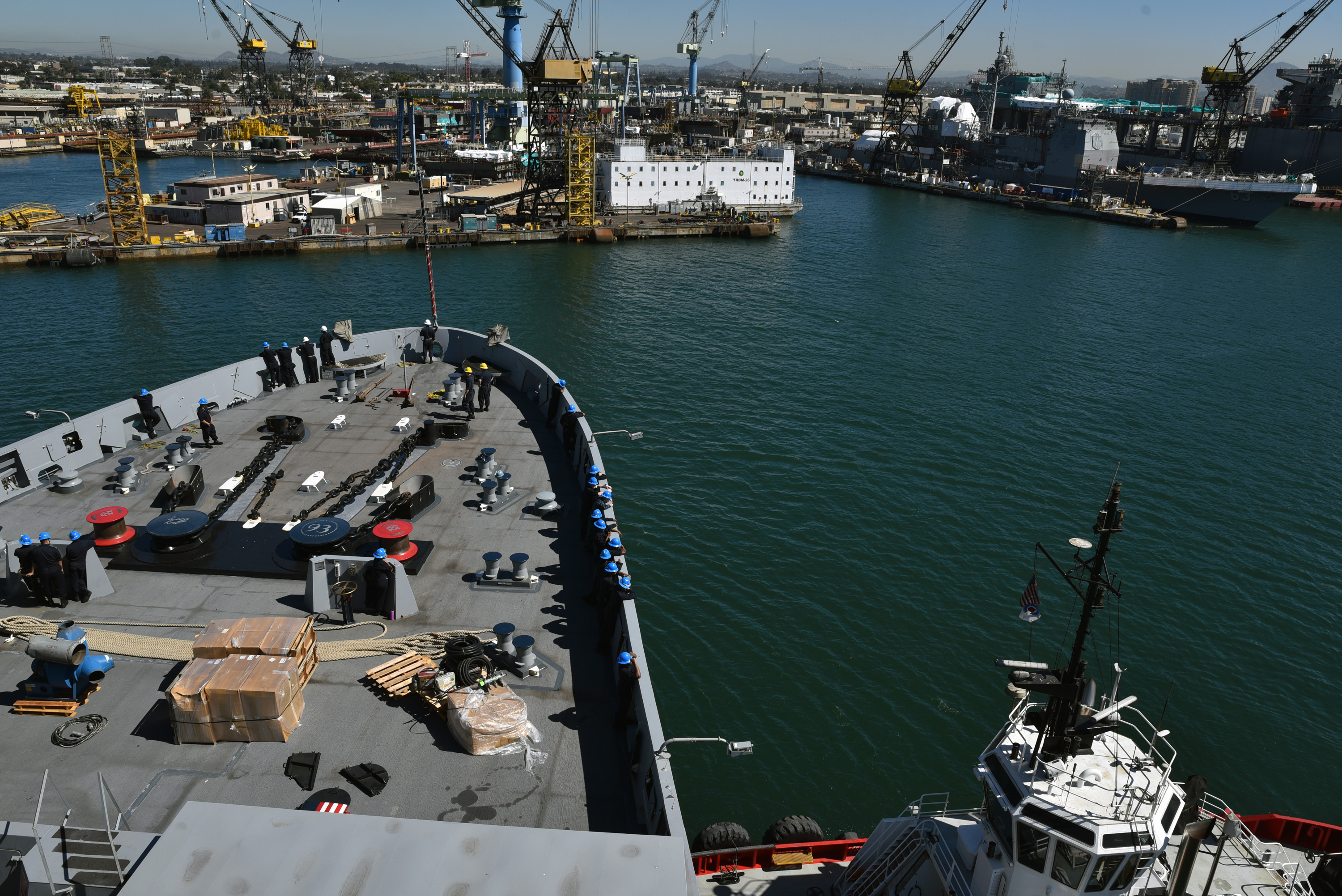
WASHINGTON, D.C. – Changing how the Navy awards ship maintenance contracts could improve how private shipyards finish work on time, said the commander of Naval Sea Systems.
The Navy is exploring ways to develop a mechanism for bundling maintenance work into multi-ship maintenance contract awards for private shipyards, said Vice Adm. Thomas Moore, head of NAVSEA, while speaking Wednesday at the annual McAleese and Associates Defense Programs Conference.
The Navy wants maintenance work completed on-time and the maintenance contractors want predictable workloads so they can adequately staff the shipyards and order equipment and parts ahead of when the ships arrive.
“Ultimately, getting them bundles is the key to us being successful delivering these on time,” Moore said.
Awarding multi-ship contracts provides predictable schedules the Navy and industry can use for their planning, Moore said. If the yards can keep their workforce stable, they can improve their efficiencies and apply lessons learned to their business process.
“Industry is rational. That’s what I tell everybody, you make not like every decision they make, but the decisions most always are very, very rational,” Moore said. “As long as you understand what that decision making is and that they have to make a value for their shareholders, then generally, you can predict what they’re going to do.”
With ship maintenance contracts, The Navy has for years tried striking the right balance between providing the industry with predictable work and working to drive down costs through competitive bidding.
The Navy moved from cost-plus contracts that gave a single yard several year’s worth of guaranteed work on a single ship class, to using a fixed-price contract mechanism where shipyards bid on each ship due for work individually to increase competition for work and decrease prices.
The desire for multi-ship contracts exists because the current mechanism doesn’t give yards much incentive to invest heavily in their yards if they are not sure they’ll receive more than one award, Moore said. The challenge is developing an appropriate pricing mechanism for multiple ship repairs.
“New construction is pretty easy because you’re building the same thing every time,” Moore said. “Where in ship repair, the work package is going to look a little different every time, so one of the questions is how do you price out for two or three ships down the road.”
The answer, Moore said, could be pegging contract pricing to predicted manhours required to complete a job. The Navy has enough data to anticipate a ship in service for a certain number of years old will likely need anticipated maintenance and upgrades.
“I think what you do is just bid a certain number of manhours and a certain split of workers and then we’ll agree on a labor rate,” Moore said. “So, when the time comes to define a work package, you’re already priced out (days of work at a labor rate).”
Long-term, the Navy must improve the rate it maintains and upgrades ships, or else it will never acquire a 355-ship fleet, Moore said. The Oliver Perry-class frigates were decommissioned mostly because their lethality waned, Moore said. Maintaining the ship hulls and mechanical equipment was possible. The ability of the frigates to provide
“It’s not because we didn’t know how to maintain the platforms. The reality was the combat systems became irrelevant,” Moore said. “I told the [Chief of Naval Operations Adm. Michael Gilday], as long as you’re confident that the combat systems are relevant, I can promise you the NAVSEA side of the house, the maintenance side of the house can keep that ship longer. I’m very confident to getting them to 45, 50 years.”





